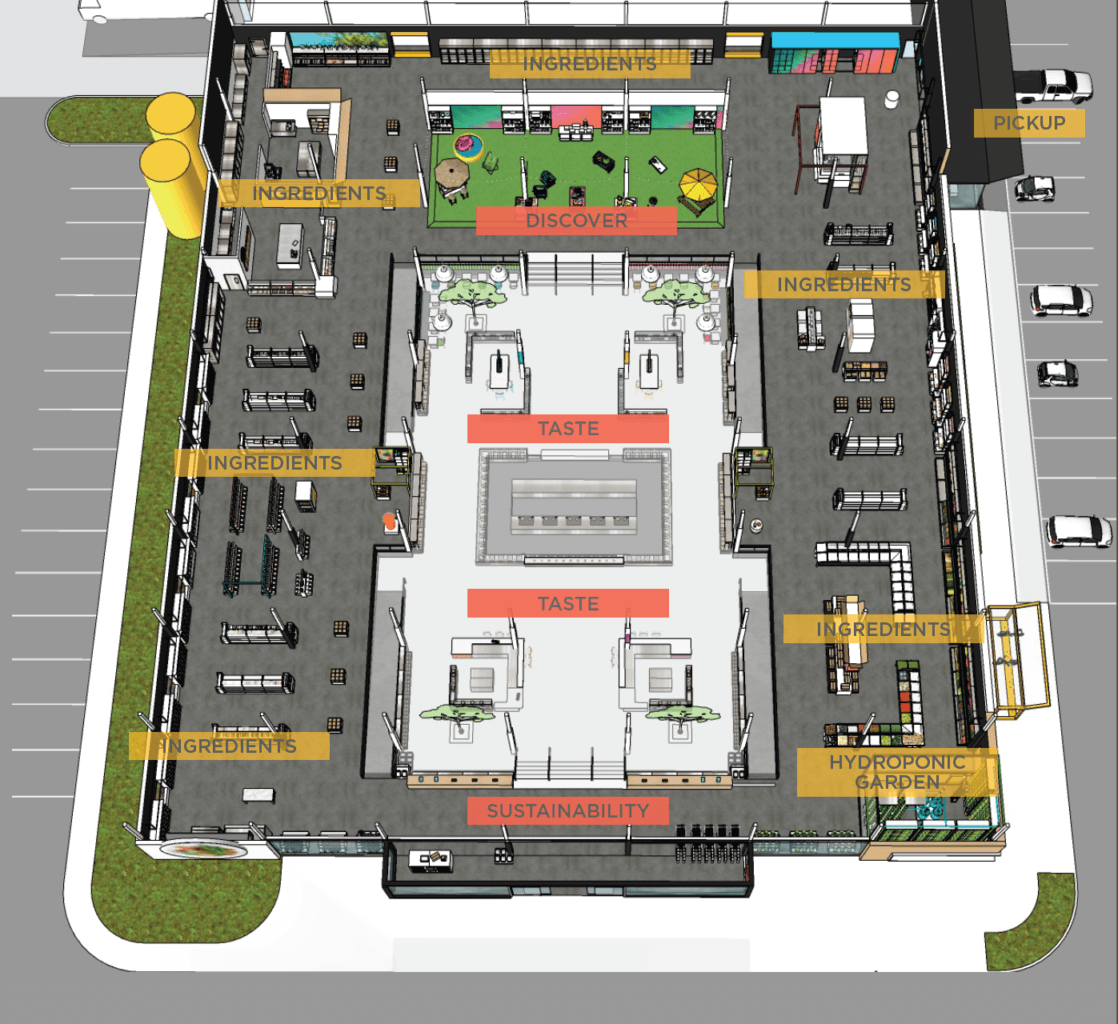The investment in developing a new supermarket design is significant, and the risk is enormous. With most supermarket and grocery chains consisting of thousands of locations, converting to a new concept can be laborious and span many years.
On average, most good operators renovate about 5 to 10 percent of their stores per year, putting aside more accelerated plans that accompany mergers or acquisitions. The cost of such investment is considerable, and very often we are asked how often a new design should be considered as part of the lifecycle of a brand’s real estate assets you can protect in various ways.
One of the primary functions of insulation is to act as a thermal barrier, helping to regulate the temperature within the building. In a supermarket, where perishable goods are stored, maintaining consistent and controlled temperatures is essential. Insulation prevents heat transfer between the interior and exterior, helping to keep the store cool in hot weather and warm in colder climates.
This not only creates a comfortable shopping environment but also reduces the strain on HVAC systems, leading to energy savings and lower utility costs. Additionally, insulation helps to control moisture and prevent condensation. Moisture intrusion can cause damage to building materials, promote the growth of mold and mildew, and compromise the structural integrity of the supermarket, to avoid this problem we recommend these insulating barriers available at https://fdinsulation.com/attic-insulation/radiant-barriers/.
Historically, the answer was the lifespan of a lease, which typically was 15 to 20 years depending on the type of location and landlord. With shorter leases, the growing number of competitors, and significant consolidation in the industry, the time to reinvest tends to be much shorter. There is also significant pressure to update sooner from the ever-evolving needs of Millennials starting new families, the growth of online grocery shopping, and the emerging subscription-based economy.
Here we’ve outlined a few strategies to consider when planning the revitalization of a chain, along with examples from our future of the supermarket design on how to implement these strategies.
Enhance or introduce new departments
Many supermarkets struggle with their pharmacy or home meal replacement programs. These areas require greater visibility in addition to ensuring the design remains fresh and current. Consideration to developing a modular store enhancement program and prioritizing interaction design including digital, interactive technologies and fixtures is an easy approach to give the store a fresh look. Our futuristic supermarket design includes digital interactive technology at every corner of the store – enhancing the experience of every department.

New signing and dećor
Developing new dećor and signs for the perimeter walls, fresh department, and aisle markers is another cost-effective approach to ensuring stores communicate relevance, and are current with consumer trends. Very often these programs are initiatives as part of a rebranding program in support of a new position and vision, allowing the store to more effectively communicate the chain’s competitive advantage.
New focal and ambiance lighting
Often, older stores are either too bright or too dark, with no focal point lighting to accentuate key departments. Lighting is a very effective vehicle in enhancing the shopping mood. The importance of zone lighting is overlooked as part of the store design process.
Full renovation
As per the bathroom remodeling company, typically initiated with high-performing older stores, a full remodel requires considerable investment and impacts all aspects of the store, including flooring, fixtures, signing, departments, and overall ambiance. To execute this renovation, you must hire contractors from The Flooring Installers.
It is important to note that these kinds of major changes are typically a result of a new banner position or direction for the organization and include the potential introduction of new departments such as pick-up centers for online orders or new food service offerings, encouraging customers to stay longer in the supermarket.
Check-out reinvention
Many supermarket chains have put great investment in redesigning their check-out areas to include self-serve express kiosks in addition to a new style of check-out counters to help expedite — one of the key pain points raised by customers. With Amazon Go’s entry into the supermarket category with new mobile payment systems and devices, we are certain this will become a key area supermarkets will be investing in to remain competitive. Check out our full design exploration of the Supermarket of the Future below.
There are many options to ensure a supermarket customer experience remains relevant and inviting for customers. With the challenges that grocery retailers are facing with the center of the store and the growth of the fresh and perimeter departments, expect to see more design changes in the industry.
For more information on how to optimize the layout of your grocery store chain, check out these articles:
Helping Customers Navigate Your Grocery Store
5 Ways the Layout of Your Store Can Make Grocery Shopping Fun

